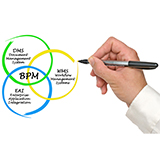Pega

Course Information
PEGA is an enterprise service application that acts as an Integrated development environment (IDE) and helps to build applications. Pega runs on JDK Tool kit and is used to develop UI,data access logics, validation rules etc.This tool is used to reduce coding and build multilevel systems at enterprise level. By using PEGA module work becomes as faster and easier. It rapidly responds to new business opportunities and challenges.
There are different benefits in unique format in pega’s 7 platforms:
- Direct Capture Objectives
- Situational Layer Cake
- Omni-Channel UX
- Case life cycle management
- Next Best Action
PEGA PEGA tool is also known to be ‘PRPC’ Pega Rules Process Commander. RPC provides platform and interfaces to business analyst. Pega is a Business Management Tool.
Core topics of PEGA 7.1 PRPC Online Course
- Introduction to PRPC
- Introduction to User Portals
- Introduction to Fields and Data Elements
- Introduction to UI and Form Design
- Introduction to Process Definition
- Working with ClassGroup/WorkPool
- Class Structure and RuleSets
- Creating a Data Model
Create a Property Using the New Rule Dialog
b. Change the Appearance of a property
c. Create properties Using the Define property Wizard
d. Create Embedded properties
e. Create a Data Table
f. Set Initial Values a Model Rule
g. Check-in/Check-out Functionality - Process Definition
Create a Sub-flow
b. Create a Tabbed Screen Flow
c. Call a Sub-flow from a Starter Flow - Case Management (New in Pega 7)
- Stage based case management
- User Interface
Create a Section
b. Create a Section Containing Multiple Layouts
c. Adding a Section to a Flow Action - Advanced UI
Conditionally Display a Layout Using a When Rule
b. Conditionally Display Property Fields
c. Create a Dynamic Select Control
d. Repeat layout( Row/Tree/Grid) - Dynamic Layouts (New In Pega 7)
- Decision Rules
- In depth explanation on Activities and its methods.
- Obj- Methods
- RDB- Methods
- Validation Methods
- Property- Methods
- Page- Methods
- Flow- Methods
- Commit/Rollback
- Exit-Activity & Activity-End
- Call & Branch
- Other Methods
Advanced Concepts
- Assigning the work
- To Work List
- To Work Basket
- To Skill Based Work Basket
- To Current Operator
- Creating Work Group / Work basket
- Validation
Types of validations
b. Difference between Rule-Edit-Validation and Rule-Obj-Validation - Declarative Rules
- Data Pages (New in Pega 7)
- Advanced Activities
Create an Activity with a precondition and a Transition
b. Create an Activity to Populate a Dynamic Select
c. Create an Activity to Write Data Table - SLA( Service Level Agreements)
- Define an SLA
- Assigning SLA to Assignment
- Assigning SLA to Work-Object
- Testing SLA
- Integration Connectors
- Connecting to External Data Base Using Connect-SQL
- How to Use Dynamic SQL When Connecting to External DB
- How to Send a Correspondence (E-mail)
- Manual Correspondence
- Automatic Correspondence
- Correspondence Fragment
- Configuring E-mail (Inbound/Outbound)
- Configuring Web Services (SOAP).
- Migration/Deployment (Import & Export)
- Working with Agents
- Advanced Agents
- Slandered Agents
- Debugging tools
- ClipBoard
- Tracer
- Documenting the Application
